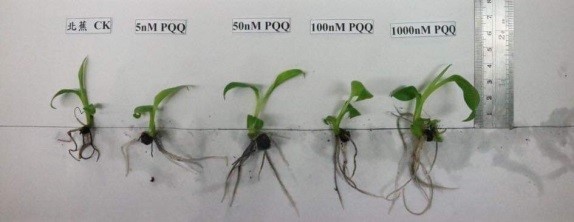
B&B e-Paper
B&B e-Paper
B&B E-Paper No.5
Highlight of APO 4th International Conference on Biofertilizers and Biopesticides (ICBB)
●Background
The 4th ICBB provided a platform for leaders from the public sector, the private sectors, NGOs, senior academics, entrepreneurs, and consultants to review the latest scientific knowledge, technological breakthroughs and future prospects for the application of biofertilizers and biopesticides (B&B), and IPM to identify sustainable solutions and promote productivity in agriculture. Eighteen local participants and twelve overseas participants are from Bangladesh, Cambodia, India, Indonesia, Iran, Malaysia, Nepal, Pakistan, Philippines, Sri Lanka, Thailand, and Vietnam. Seven resource persons from Switzerland, Japan, ROC, Thailand, India, Vietnam, and Philippines gave presentations about IPM strategies and B&B issues.
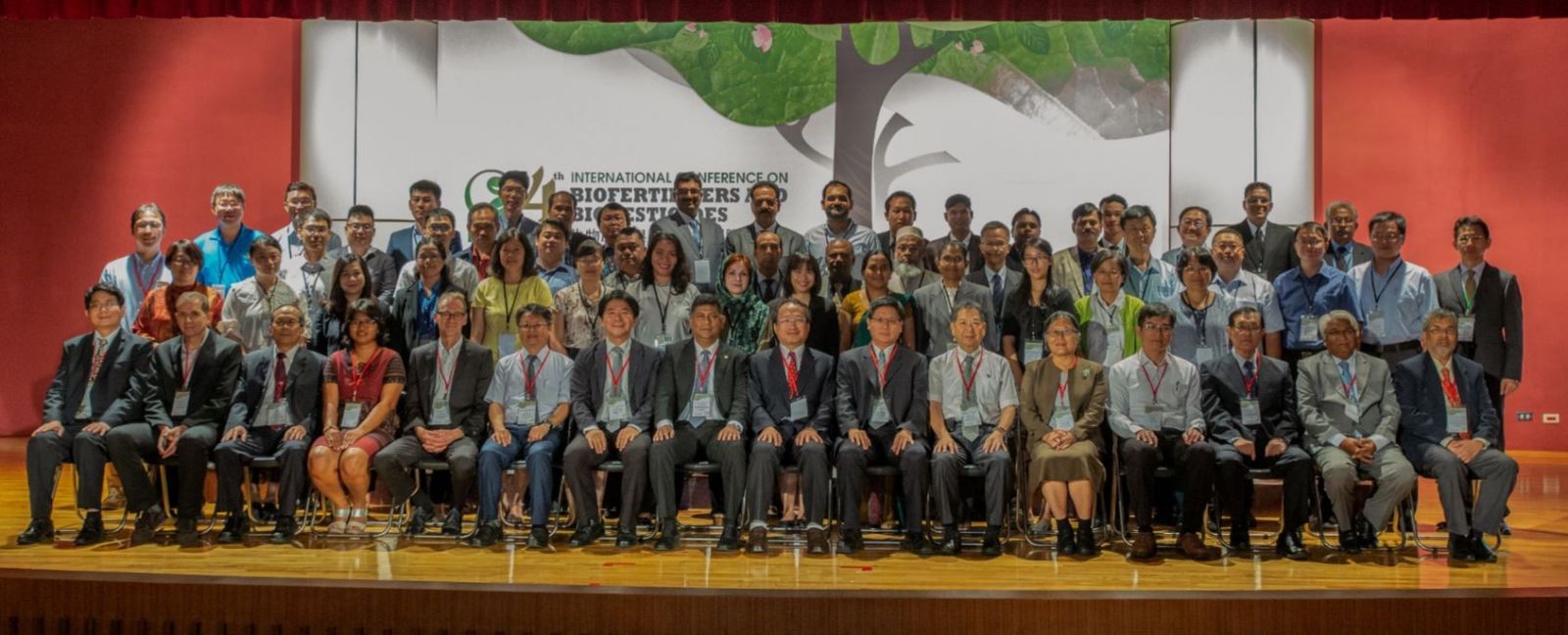
Group Photo of 4th International Conference on Biofertilizers and Biopesticides
Abstract of Presentation |
|
Crop protection approach in organic agriculture farming systems - innovative IPM approaches for organic farming in Europe |
|
Mr. Hans-Jakob Schaerer |
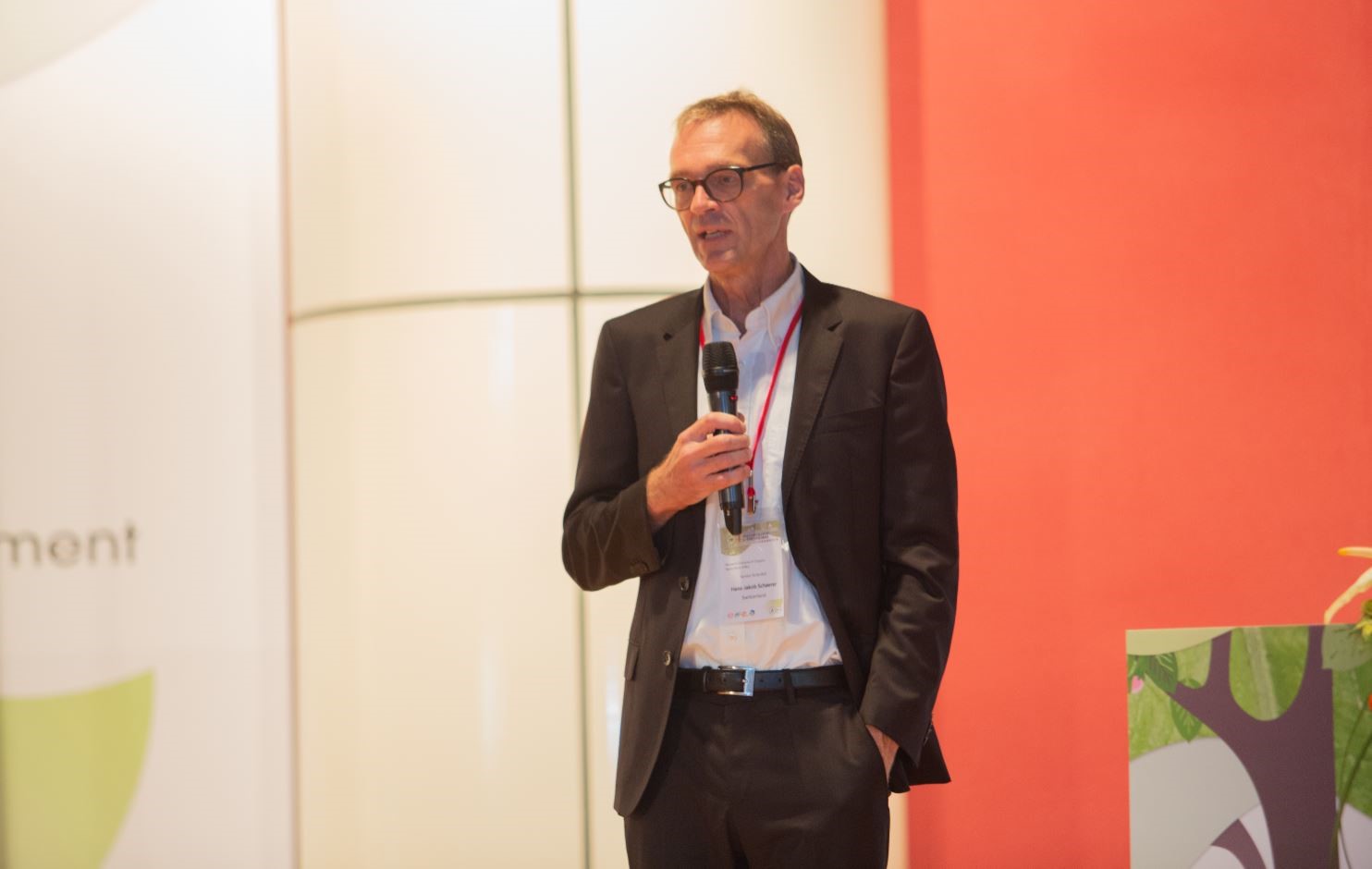 |
Organic agriculture farming systems included pest and disease management, resistant cultivars, landscape management, cultural practices, pheromones and physical measures as well as copper replacement and botanicals. The crop protection in organic production should be integrated with cultivation measures and production system, which forms a good crop protection pyramid model and needed be implemented more consequently to prevent diseases and pests instead of symptom control.
|
Application and technology transfer of the probiotic biofertilizer and biopesticide for crop health care |
|
Dr. Jenn-Wen Huang |
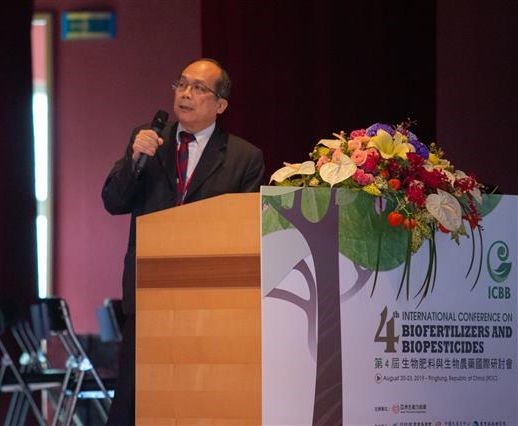 |
Several beneficial Bacillus mycoides isolates have been proven to enhance plants growth and induce disease resistance in various plants, including tomato, lettuce, rape, cabbage, and asparagus bean. The mechanisms underlying plant growth promotion and pest resistance are as listed below: 1) B. mycoides can effectively colonize inside root system and induces plant defense reactions. 2) B. mycoides produces the plant promoting hormone indole-acetic acid(IAA) to enhance the root system development. 3) B. mycoides produces dimethyl disulfide (DMDS) and biosurfactants to disrupt cell membrane of pathogens causing cell damage/death. B. mycoides has been developed a biofungicide and a biofertilizer for healthy seedlings and various disease controls in orchid, tomato, strawberry, cucumber, and rice.
|
Case studies of research, development and application of commercial biopesticide products: case of Taiwan |
|
Dr. Feng-Chia Hsieh |
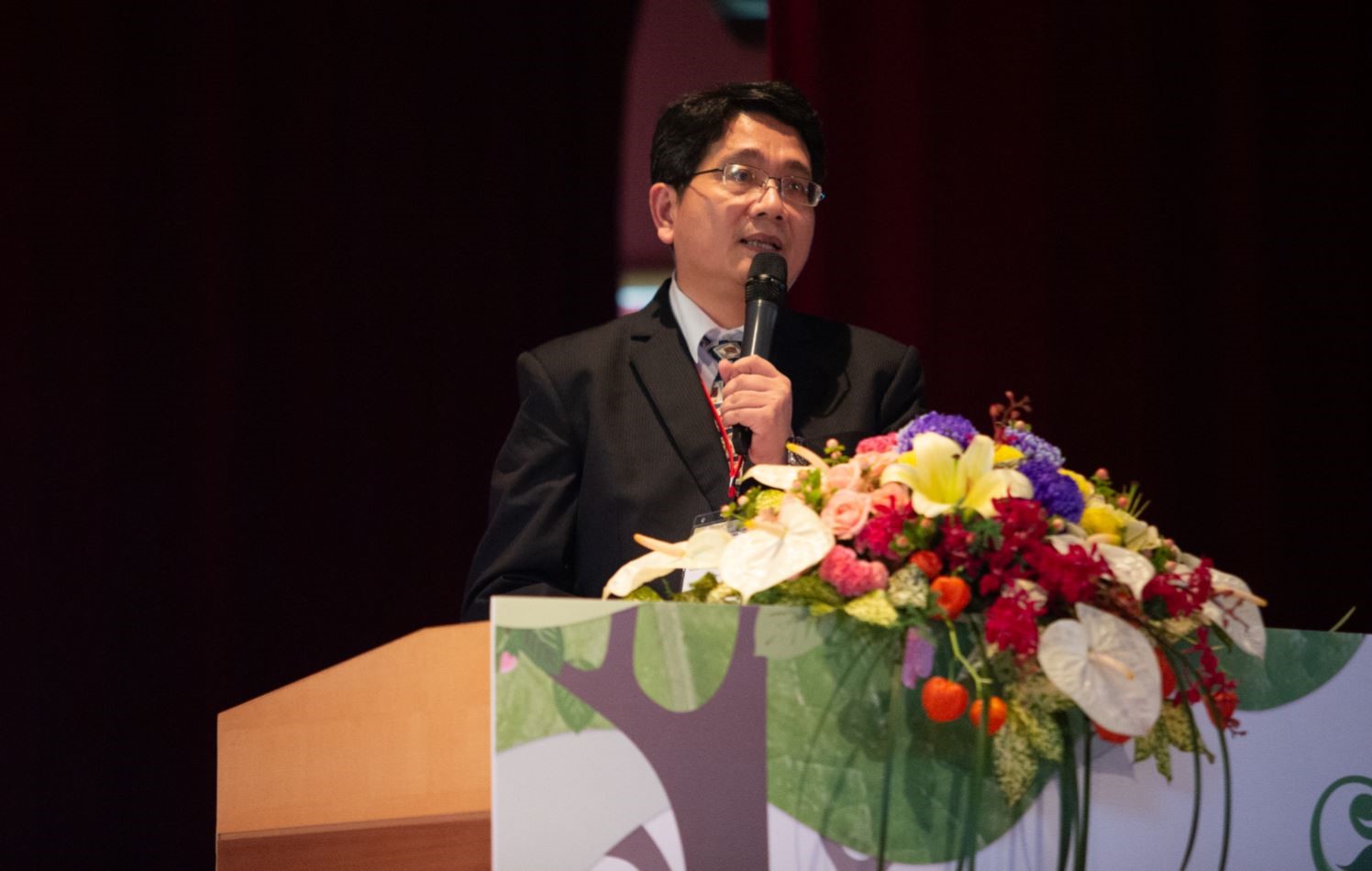 |
Bacillus amyloliquefaciens strain BACL3, produces the lipopeptides iturinA, fengycin and surfactin, has antimicrobial capacity for inhibiting fungal or bacterial diseases. Strain BACL3 is also an endophytic free-living bacterium, that can promote the plant growth either directly or indirectly. Furthermore, strain BACL3 produces specific functional enzymes, such as lipase for decomposing fat, amylase for hydrolyzing starch, cellulase for hydrolyzing cellulose and protease for hydrolyzing protein. Strain BACL3 registrated as biofungicide in 2018 in Taiwan. Strain Ba-BPD1, another successful case, has been developed as biofertilizers, biofungicides, probiotic feed additives and water purifying agents. Five friendly environmental products, covering areas of plant and animal, can reduce the use of chemical drugs, and enhance users' confidence in the safety of agricultural products.
|
Rice cultivation with innovative biofertilizer and biopesticide methods in Japan |
|
Dr. Hideki Sugimoto |
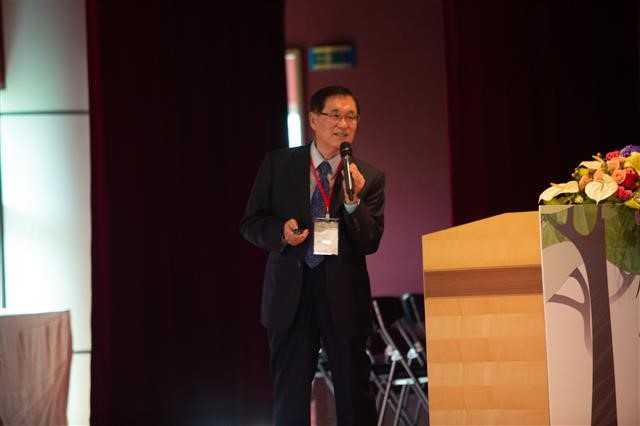 |
Weed control is the most important part for organic rice cultivation. Rice produced by organic farming in fiscal 2016 is only 0.11% of the total production in Japan. In recent years, the abundance of jellyfish has increased in oceans causing severe damage and problems to the fishery and coastal facilities. Jellyfish chips (desalted, dried, and shredded jellyfish) can be an effective substitute for chemical fertilizers and herbicides. Combined application of jellyfish chips and rice bran enhanced soil fertility. By white clover incorporation and the application of rapeseed oil cake and rice bran combination, yield of paddy rice increased and weeds were significantly decreased.
|
Business opportunities of foreign biofertilizers and biopesticides products on IPM - case of India |
|
Dr. Venkatesh Devanur |
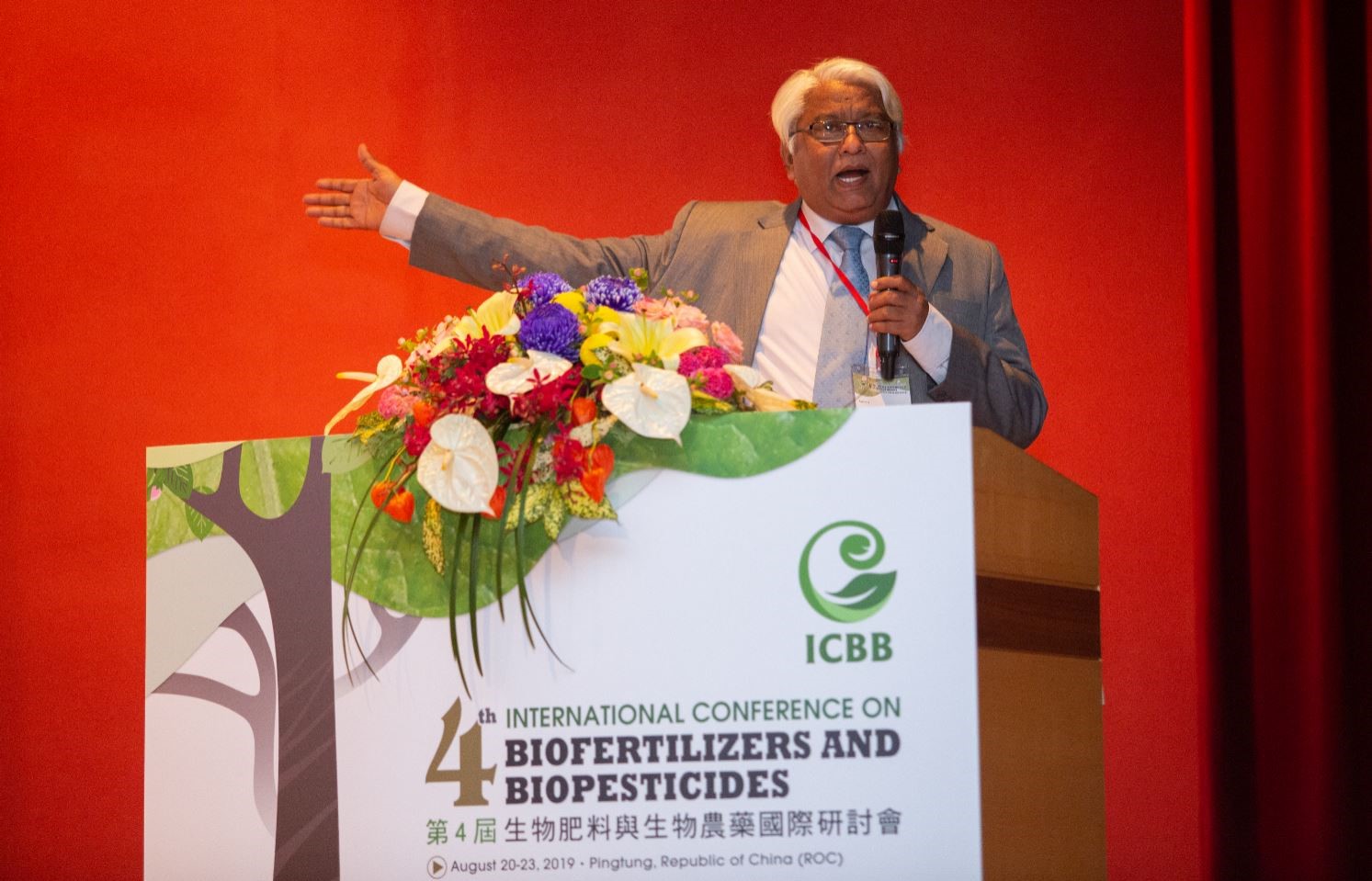 |
India is a large agrarian society with over 50% of the population associated with farming/agriculture related practices. All microbes that while applying for product registration must be submitted for deposit into National Bureau of Agriculturally Important Microbes (NBAIM) and obtain accession number.
Manufacturing company has to submit the Central Insecticides Board (CIB) for grants of registration certificates and get‘sales permission” from the director of agriculture in the state where the manufacturing facility is located. Also, manufacturing company needs to get ‘sales permission” from the director of agriculture in the state where the manufacturing facility is located. The company again needs to apply for permission in each state where biopesticides intended to be sold. After obtaining this sales permission, the company can issue “principal certificate” to trade dealers. The dealer has submit the “principal certificate” to respective local office of agriculture department and obtain “pesticide license”. Foreign companies must request permission from National Biodiversity Authority (NBA) for exporting microorganisms to India. So far as we know, introducing microbial biofertilizers and biopesticides from foreign origin into India with NBA approval is very difficult.
Field Visit |
|
Integrated pest management (IPM) for melons and tomatoes |
|
Mr. Liang, a 50-year-old farmer, has extensive |
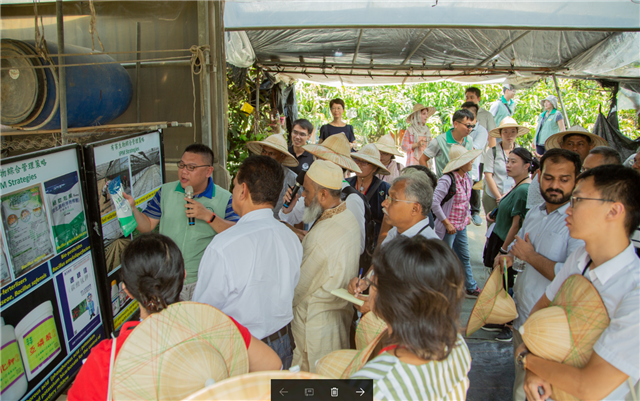 |
|
Herbage crops' field of nature of balance |
|
Dr. Lee's farm was founded in 2013 and defined |
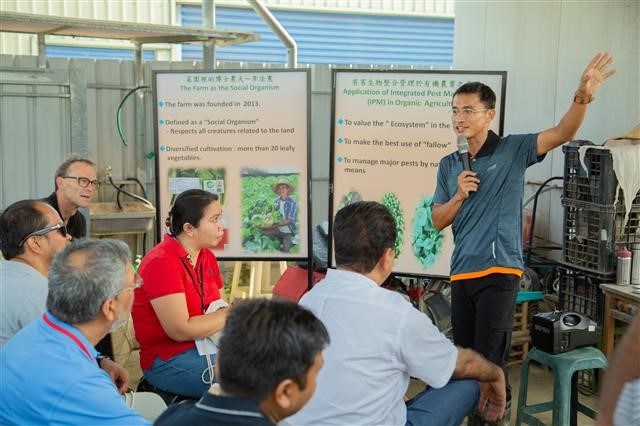 |
|
TBRI challenges panama disease of banana |
| Taiwan Banana Research Institute (TBRI) has been established to improve the livelihood of small growers and the competitiveness of Taiwan banana industry since 1970. TBRI endeavors to the collaboration with academic units in evaluating the effect of various microbes in promoting growth and healthiness of banana plants derived from tissue culture over the last 10 years. Currently, an endophyte, Burkhoderia cenocepacia 869T2, has shown its potential as a bio fertilizer and a bio pesticide especially against Foc TR4 (Fig 1). Another beneficial bacteria microbe which was isolated from Bacillus velezensis also showed its effect in preventing crown rot of banana. Two technologies developed in propagating healthy banana tissue culture seedling and applying somaclonal cultivar such as the newly bred resistant cultivar, Tai-Chiao No.8, to manage Foc TR4 are well recognized globally. | |
|
|
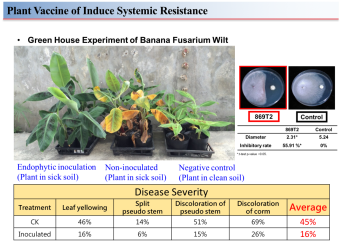 |
Fig 1. The endophyte 869T2 of Burkhoderia cenocepacia is a plant growth-promoting rhizobacteria (L), and has potential to reduce Foc TR4 infection on banana plant (B).
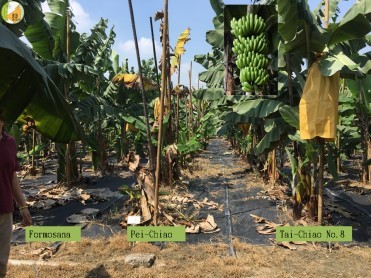 |
Fig 2. Expression of resistance to Foc TR4 by the newly bred cultivar, Tai-Chiao No. 8 (R), and its parent, Formosana (L), respectively,against the susceptible Pei-Chiao.
Seek Now >> Taiwan Commercial Seed (http://tssb2b.tss.gov.tw)
